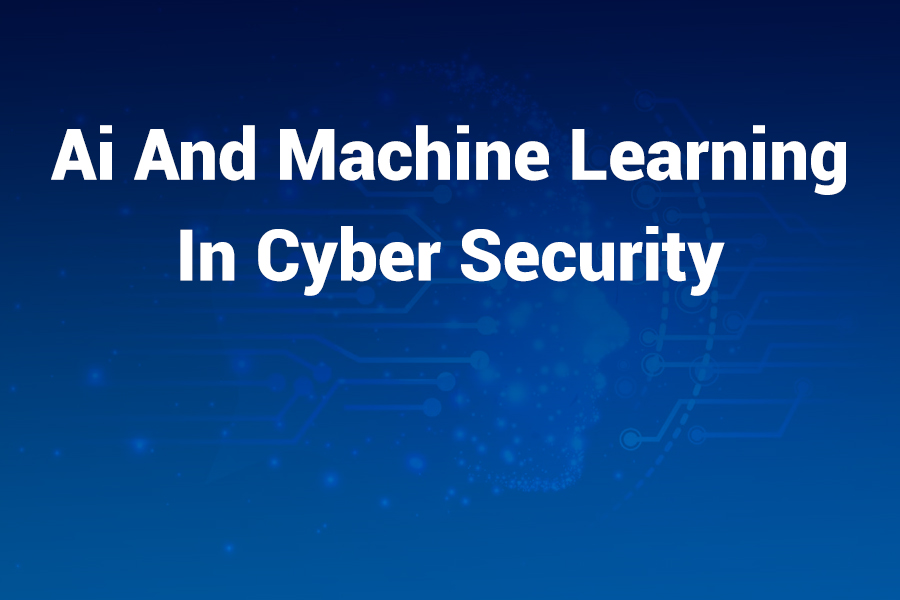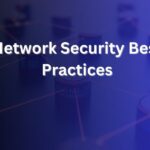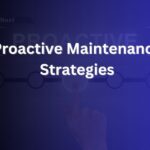Cyber attacks move faster than manual teams. Threats blend into normal traffic. Adversaries automate reconnaissance and delivery. Security leaders need speed and clarity. AI and machine learning deliver both with pattern recognition at scale.
These systems learn baselines, spot anomalies, and trigger action. They improve decisions with context and evidence. You will see how to plan, deploy, tune, and govern these tools. You will also learn the risks and the limits of automation. You will finish with a clear roadmap and practical checklists, in this article.
Why AI and ML now
Attackers shorten the time from entry to lateral movement. CrowdStrike recorded a fastest eCrime “breakout time” of 51 seconds. Most detections were “malware-free,” which means living-off-the-land techniques dominate. Those numbers force real-time detection and response.
Breaches cost more when response drags. IBM’s 2024 report pegged the average global breach at $4.88 million. That number reflects disruption as much as data loss. Slow triage multiplies legal, regulatory, and reputational costs.
Phishing remains a top door opener. From March 2024 to February 2025, phishing accounted for about 16% of breach initial vectors. AI now writes, voices, and localizes lures at scale. That drives click-throughs and credential theft.
Ransomware keeps growing and adapting. 2024 saw an 11% rise in global ransomware incidents. Health, finance, and critical services stayed in the crosshairs. That pressure tests backup, restoration, and segmentation plans.
What AI and ML actually do
AI and ML upgrade detection from static rules to adaptive models. They learn what “normal” looks like in your environment. They flag deviations across identity, endpoints, networks, and cloud. They triage alerts and propose actions. They integrate with SOAR to isolate or block. They summarize incidents for faster human review. They keep learning as data grows.
These systems also reduce noise. They cluster related alerts and collapse duplicates. Analysts get fewer tickets with more context. That saves fatigue and improves coverage. Teams focus on the real fires.
Core use cases that pay off first
Endpoint detection and response (EDR).
Models classify process chains, command-line patterns, and DLL loads. They catch fileless activity and suspicious parent-child pairs. They score events and trigger containment in seconds.
Email and collaboration security.
NLP screens headers, bodies, URLs, and attachments. It catches lookalike domains and business-email-compromise tone. It flags unusual sender behavior in shared tenants. It quarantines high-risk mail for review.
User and entity behavior analytics (UEBA).
ML learns login rhythms and data access baselines. It spots impossible travel, unusual resource access, and odd data pulls. It correlates with device health and network paths for confidence.
Network and cloud anomaly detection.
Unsupervised models highlight strange east-west flows. They surface atypical API sequences in SaaS. They note spikes in privilege creation or key rotation. They detect drift in container images and runtime.
Phishing and deepfake defense.
Classifiers score linguistic and visual signals. Voice and video checks look for cloning artifacts. Systems compare caller behavior against historic patterns. Alerts route to security or fraud teams.
Supply-chain and third-party risk.
Behavioral models watch vendor accounts and machine identities. They flag abnormal permission grants. They track software updates that arrive off-schedule or from new hosts.
Malware and zero-day analysis.
Deep learning extracts features from binaries and scripts. Sandboxes stream telemetry into classifiers. The system blocks look-alike families before signatures exist.
How the models work under the hood
Supervised learning shines when you have labeled data. Think phishing classification or known bad IP prediction. It gives crisp accuracy and fast decisions.
Unsupervised learning hunts the unknown. It clusters behavior and alerts on outliers. It finds “never-seen-before” paths without labels.
Deep learning handles messy, high-dimensional inputs. It parses logs, binaries, packets, and text. It excels at subtle patterns humans miss.
Reinforcement learning tunes response playbooks. The system “learns” which containment steps shorten dwell time. Rewards push it toward better sequences.
Metaheuristics can speed search in huge feature spaces. They raise recall without drowning teams in noise. That matters in sprawling cloud estates.
Architect a stack that fits your environment
Start with identity, endpoints, and email. Those planes see the most abuse. Feed high-quality telemetry into your data lake. Enrich with asset context and business criticality. Map events to identities and devices first. That mapping unlocks faster triage.
Choose tools that integrate cleanly. Favor platforms with open APIs and native SOAR hooks. You want quick isolation for hosts and sessions. You want auto-ticketing into your ITSM. You want evidence attached to each action.
Run pilots in production-like conditions. Use a canary subnet or a real business unit. Measure mean time to detect. Measure mean time to contain. Compare before-and-after against the same playbooks. Keep a strict change log to avoid false wins.
Data strategy makes or breaks AI
Good data wins. Garbage data lies. Start with coverage. Pull identity logs, EDR telemetry, DNS, web proxy, email, and cloud control plane. Capture enough history to model seasonality. Keep at least 90 days hot if budgets allow.
Normalize aggressively. Unify timestamps. Map users to HR sources of truth. Link device IDs to CMDB entries. Tag assets with owners and sensitivity. That context reduces false positives.
Label high-value cases. Have analysts mark “true incident,” “benign anomaly,” or “test.” Feed that back into training sets. Rotating labels improves accuracy within your unique environment.
Protect privacy. Mask personal data that models do not need. Use role-based access to logs. Keep audit trails on model access and changes. Document data flows for compliance reviews.
Detection without response does not help
Tie models to concrete actions. Pre-approve quarantines for low-risk assets. Require one-click human approval for critical segments. Define rollback steps for every automated play. Document who gets paged and when. Practice on weekends when load is low.
Measure outcomes, not activity. Track dwell time and lateral movement distance. Track how many incidents ended at initial access. Track how often backups restored cleanly. Those metrics tell you if models help real risk.
Shrink attacker breakout windows
Speed matters more than perfection. When models flag strong signals, isolate first and investigate second. You can always un-quarantine a machine. You cannot undo a mass exfiltration. Align leadership on this stance. Publish a clear bar for auto-containment. CrowdStrike’s 51-second ceiling shows how ruthless timing is now.
Tame false positives without losing sensitivity
Start broad, then tighten. Use staged enforcement. Begin with “monitor-only” on noisy rules. Add allow-lists for known automated jobs. Pair high-fidelity signals with lower-fidelity context. Example: unusual download volume plus new impossible travel. Together, that reaches your action threshold.
Review drift weekly. New software, org changes, and seasonality will shift baselines. Retrain on a schedule. Keep old models available to compare. Track why analysts overturn alerts. Fix root causes, not just thresholds.
People remain the advantage
AI multiplies good analysts. It does not replace them. Train staff to ask strong questions. Teach them to read model evidence and rationale. Give them runbooks with guardrails. Rotate them through purple-team exercises. Humans still spot intent, deception, and business impact.
Teach the business how to report suspicious activity. Make reporting easier than staying silent. Reward quick escalation. Most breaches still begin with human-targeted lures. Phishing remains the top initial vector in many series. So invest in awareness and easy MFA.)
Governance and risk control
Document model objectives and boundaries. State what each model predicts. List inputs and expected outputs. Write down who owns tuning and approvals. Keep version history with change reasons.
Add explainability where it counts. Use feature importance, example-based explanations, or rule extraction. Analysts need a why, not just a score. Regulators and auditors will ask the same question. Prefer models that support inspection over black-box only.
Build an AI incident register. Track automation misfires and near misses. Note what triggered a wrong action. Capture the business impact. Decide when to disable a rule and how to recover. Treat AI errors like any production incident.
Harden the models. Adversaries will try to poison training data. They will craft inputs to dodge detection. Validate data sources with checksums and provenance. Rate-limit feedback loops. Keep shadow models to cross-check high-risk decisions.
Vendor selection checklist
Ask for real detection efficacy in your sector. Demand peer references with similar size and stack. Request fresh tests with your data, not canned demos.
Probe their data pipeline. How do they normalize logs. How do they handle missing fields. How do they enrich identity and asset context. Poor pipelines doom fancy models.
Review automation design. Can you set staged enforcement. Can you require approvals by asset class. Can you roll back easily. How long do isolation actions take.
Check reporting. Can you export evidence and timelines. Can you feed results to your SIEM. Can you track KPIs without manual spreadsheets.
Push on security and privacy. Where does training occur. How is your data segregated. What logs exist for model access. Who can see your raw events.
Build a practical 90-day plan
Days 0-15.
Confirm scope. Pick two quick-win planes: email and endpoints. Inventory data sources and gaps. Enable high-value telemetry. Define KPIs and a simple success scorecard.
Days 16-45.
Deploy pilots. Start with monitor-only. Validate alert quality with analysts. Enable staged automation on low-risk assets. Tune allow-lists for noisy jobs.
Days 46-75.
Expand to UEBA and cloud control planes. Connect SOAR for fast isolation. Add auto-ticketing to ITSM. Publish weekly metrics to leadership.
Days 76-90.
Move to enforce-by-default on proven rules. Document governance and retrain cadence. Schedule a purple-team exercise to stress the system. Lock budgets based on measured wins.
KPIs that leaders care about
Mean time to detect and contain.
Number of lateral movement attempts stopped at the first hop.
Percent of incidents auto-contained within five minutes.
False positive rate and analyst overturn reasons.
Coverage across identities, endpoints, email, and cloud.
Training cadence and model version adoption.
Present those on one page. Tie each to real dollars and risk. Use before-and-after comparisons. Point to IBM’s cost benchmarks for context. Senior leaders respond to clear deltas.
Where AI fails and how to handle it
Sparse data hurts accuracy. Fix coverage and labeling first. Do not overfit to last quarter’s breach. Drift creeps in quietly as your environment changes. Schedule retraining and validation.
AI can over-automate. Do not let a model kill sessions in your trading floor without guardrails. Use asset classes and business criticality to gate actions. Require approvals where risk to operations is high.
Opaque models erode trust. Give analysts explanations they can defend. Capture rationale in tickets. Train new hires on reading model outputs. Rotate senior analysts through tuning councils.
Attackers also use AI. They generate social-engineering content with perfect grammar. They clone voices of executives. They learn your detection patterns from public docs. Assume the adversary reads your playbooks. Refresh tactics and rotate controls.
Compliance, privacy, and U.S. considerations
Map data flows for HIPAA, GLBA, SOX, and state privacy laws. Log all automated actions and who approved them. Keep retention policies clear and enforced. Mask personal data that detection does not need. Use U.S. regions for storage if contracts require it.
Prepare for discovery. Regulators will ask why you did or did not act. Keep clean timelines with model scores and features. Preserve snapshots of model versions used during major incidents. That discipline pays off under scrutiny.
A concise buying guide for busy teams
- Start with identity, email, and endpoints.
- Demand strong integrations and real-time actions.
- Measure with business-level KPIs, not vanity metrics.
- Keep humans in the loop for high-impact assets.
- Document governance and retrain on a schedule.
The bottom line
AI and ML give security teams leverage. They lift detection from static rules to adaptive defense. They cut noise and accelerate action. They help analysts see patterns across sprawling estates. They still need clean data, tight governance, and sharp people.
Use them where the signal is strong and response can act fast. Start small, measure hard, and expand with proof. Attackers move quickly. Your defenses must move quicker still.







